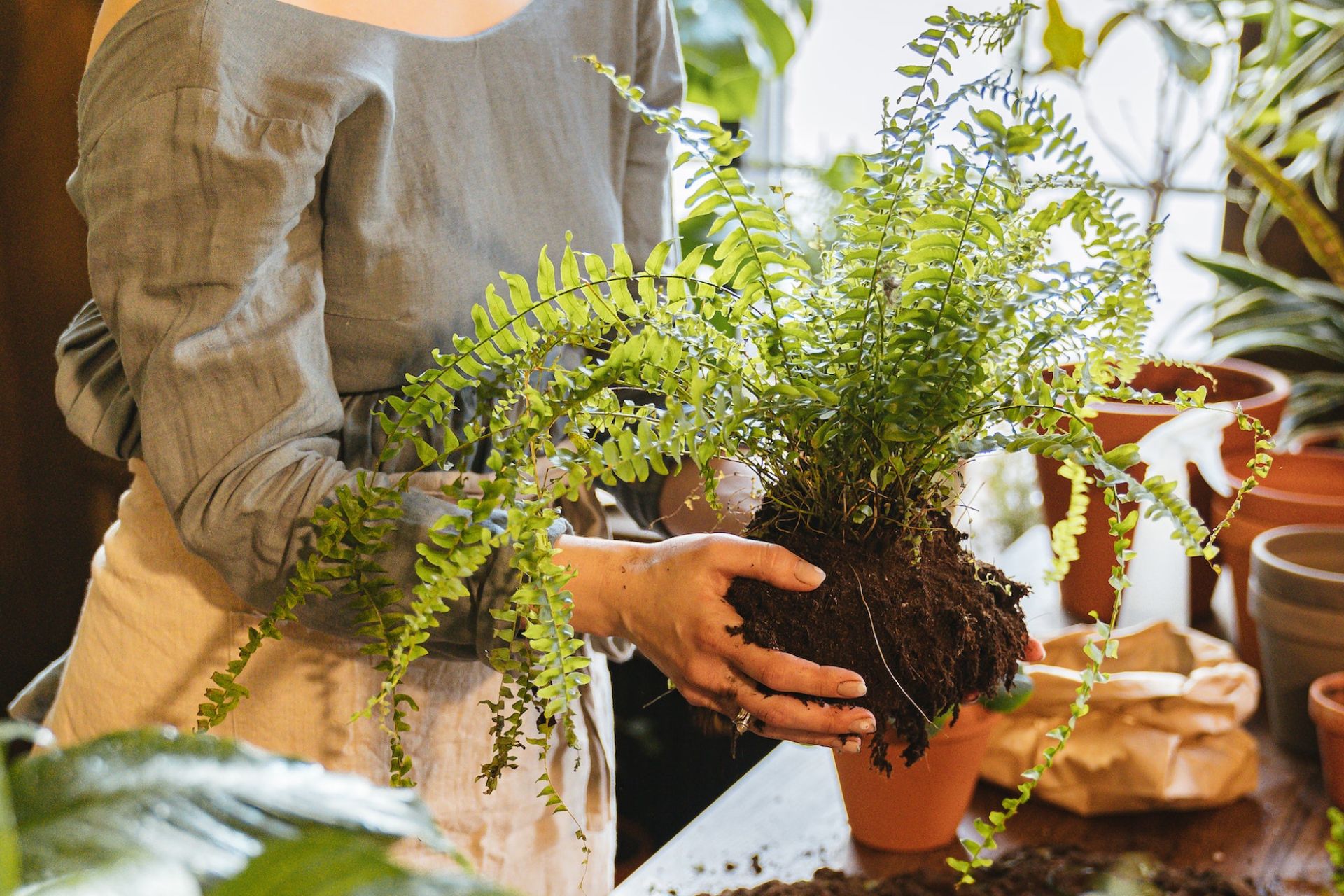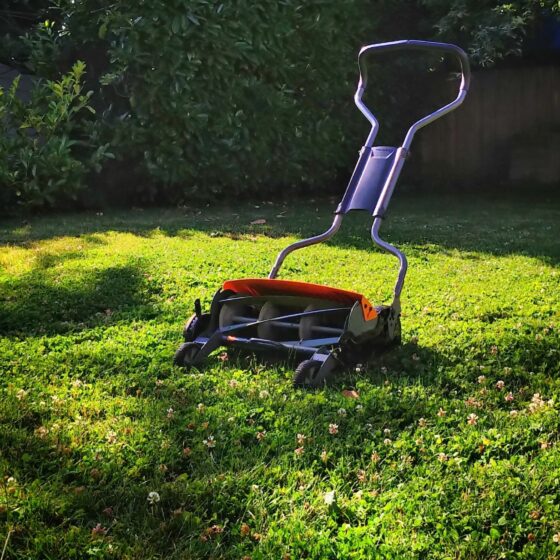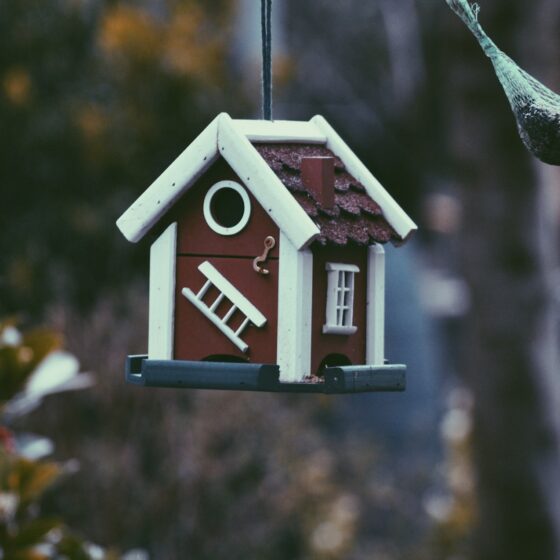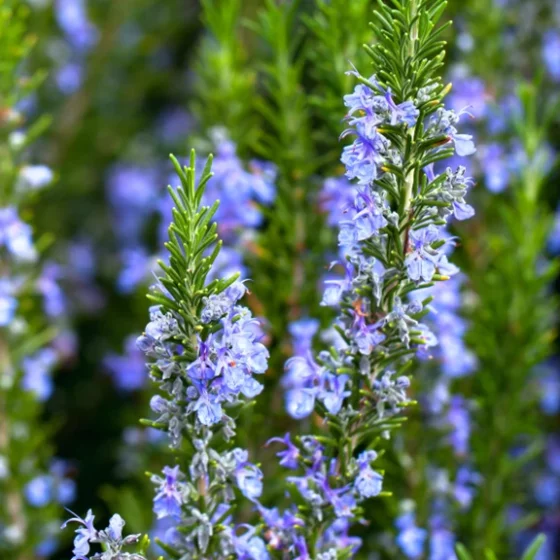Ferns come with beautiful, lush foliage and are relatively easy to take care of. Not to mention that they are ideal for growth both indoors and outdoors. So what better plant to get for your home?
In this article, we’ll show you how to take care of ferns the right way. From watering requirements to temperature regulation — we have got you covered!
Keep your green beauties healthy and lush with our complete guide below!
The Basics of Good Fern Plant Care
One of the most popular houseplants, ferns make perfect plant display decorations thanks to their beautiful evergreen fronds. Not only that, but they also grow outdoors without much fuss.
In the following sections, we’ll explain how best to stimulate fern growth and beauty.
How to Take Care of Ferns Indoors
Indoor ferns are a lot easier to handle than their outdoor counterparts. That said, they still need proper light requirements, watering, etc.
Read the following section to get the full scoop.
Discover the Light Requirements of Your Fern
In the wild, most ferns live in forests, where they grow in the shade under larger trees. There are approximately 10,500 species of ferns. Hence, it shouldn’t come as a surprise that some of them love bathing in direct sunlight.
For instance, the Chinese Brake and the Australian Sword fern can withstand up to 4h of direct sunlight per day. Nevertheless, other fern species, like the Boston, Christmas, and Japanese Painted ferns, grow best in lightly shaded areas. Likewise, the Japanese holly fern variety thrives in deep shade.
What’s the Best Spot for Growing Ferns Indoors?
Experts recommend a draft and pet-free environment filled with indirect sunlight.
For most fern types, you won’t err if you place them near an east- or north-facing window in your house since this is where sunlight is the weakest. For example, you can place the plant near your home office desk if the orientation is right.
However, in a room filled with intense sunlight (west- and south-oriented windows), you should place your houseplant as far away from the window as possible. That way, your ferns will have plenty of dappled light to bathe in and grow without getting their fronds burned.
What’s the Ideal Room Humidity When Caring for Ferns?
Ferns love humid environments. Their optimal air moisture levels range between 30% and 50%, which can be tricky to maintain indoors. Also, note that the humidity requirements of some fern species (like the maidenhair fern) can even go up to 70%.
To get the optimal humidity levels for your ferns to thrive, use a humidifier to accommodate their specific needs. If you prefer your living area to be on the dry side, then regular misting will keep the foliage green and plum.
Take Care of Indoor Ferns by Adjusting the Temperature
In order to develop into a healthy and happy fern, your plant needs a stable environment with temperatures between 60°F and 72°F. After all, ferns are tropical plants and require warmth.
In case the temperatures rise above 75°F, make sure you water and mist your plant more often to prevent it from drying and withering away.
Pick the Right Pot and Medium for Ferns
When learning how to care for ferns, you’ll notice straight away that a good growing medium retains some moisture on the surface. The ones containing peat or sphagnum moss are the best for exactly this reason. Not only that but they are also rich in organic content.
Besides that, pebbles, gravel, and sand are also good due to better drainage. Speaking of which, make sure you use clay or ceramic pots with drainage holes at the bottom to prevent roots from rotting due to excess water.
Lastly, make sure you apply a quality fertilizer once per month during fern’s growing season — from April to September. After that, do it every other month once the growing season is over.
How Often to Water Ferns to Keep Them Healthy?
If you know how to water orchids, this will be a walk in the park. Namely, both plants require constant moisture, yet their roots are prone to waterloging. Hence, you want to water them frequently but only little.
The general rule of thumb is to keep the top half-inch of the potting mix moist. Once it feels dry to the touch, it’s time to water your fern again.
Extra Tips on How to Take Care of Ferns
After a while, it’ll take more than just showering your green beauties with love to make them flourish.
Here’s what you need to do to achieve the best results:
- Trim the plants regularly. Cut off any brown or yellow parts to help your plant thrive.
- Repot every other year during springtime to give the fern some extra space to grow into. In case your fern has a faster growth rate, do it more often.
- Use Epsom salt to boost your plant’s chlorophyll production and help it keep pests and diseases at bay.
- Be patient. Most fern types are slow-growers; they won’t just grow overnight. However, it’s worth the wait. Once grown, they’ll fill your room with their full splendor. Usually, this takes five to ten years after planting.
How to Take Care of Ferns Outdoors
Outdoor ferns are a bit more tricky to deal with as they require more frequent watering, misting, and pest control. That said, the results can be quite rewarding.
Let’s get to the root of the issue!
Light Requirements
Make sure you plant your ferns in a nice shady spot in your garden. Better yet, find a suitable place with lots of sunlight in the early or evening hours when it’s not too hot.
Also, place them at least two feet apart from each other to give them plenty of room to grow and proper sunlight; you don’t want them fighting over scraps of sun rays.
Soil Requirements
When you take care of potted ferns outside, use the same potting medium as you would in a container for indoor growth.
Most ferns love mildly acidic and moist soil. As a result, most types will thrive on sandstone, gravel, and pebbles. However, there are also those who like slightly alkaline soil, such as limestone. Do your due diligence and find out which ones are suitable for your fern before planting.
After that, you want to keep the soil quality top-notch by adding a slow-release fertilizer every once in and while or use homemade compost and organic mulch.
Temperatures
As with indoor plants, outdoor ferns like warmth, so the same 60–72°F range applies. However, this can be a bit tricky since you can’t control the weather.
For instance, to take care of ferns in the winter, you can either replant your plant indoors or cut it down to ground level each year before or after winter. This will enable new and fresh foliage (fronds) to develop.
How Often Should You Water Outdoor Ferns?
The same rules as with indoor ferns apply. Check whether the surface is dry. If so, water them.
That said, you should be more generous with the amount of water you use since outdoor ferns are more exposed to sunlight and draft.
Watering frequency will also depend on a few other factors, such as different fern types.
For instance, to properly take care of hanging ferns, you need to water them more often than ground ferns since they’re more susceptible to drying while hanging in mid air.
Soil quality is yet another thing to look out for. Clayish soil, for instance, requires less watering (once every two weeks) than ferns planted in rocky soil.
Other Tips for Making Your Fern Thrive Outdoors
The best part about growing ferns outdoors is that they are fairly resistant to pests and diseases. Even so, you should check up on them from time to time to make sure they aren’t being goarged upon by some pesky skunks or racoons.
To take care of outdoor ferns without much fuss, make sure you pick a variety that thrives in your environment. For example, the most popular choice for outdoor ferns is the Boston Fern, most commonly placed in hanging baskets.
Other exceptional garden choices include the Christmas fern, the Wood fern, the Lady fern, and the Maidenhair fern.
Conclusion
At the end of the day, it all comes down to proper care and patience. Water your ferns regularly; keep the soil moist and the roots dry; use quality feartlizers or organic compost; keep them out of direct sunlight, and they’ll reach their full glory in no time. Happy planting!
FAQ
Are ferns easy to care for?
Yes, they are, relatively speaking. The biggest challenge is keeping the humidity levels up. Other than that, you only need to water them regularly and protect them from dry air, draft, and direct sunlight — all of which are fairly easy to manage.
How often should I water my fern?
It depends whether you have indoor or outdoor ferns. The latter should be watered a few times per week, whereas the former requires watering only once per week. Moreover, different species of ferns have different watering requirements.
High temperatures and sun exposure also play a role; if the ground is dry, add some water.
Do ferns need sun?
Most fern types get sunburnt when in direct sunlight. Hence, make sure you place your plant in a light shade or near windows facing north or east. Note that some species prefer the shade, whereas others prefer sunlight, so make sure you meet all of their needs.
Why is my fern turning brown?
In most cases, brown leaves are a sign that your fern requires more water or moisture. Ferns thrive in environments with air humidity levels of 30–50% and moist soil. Also, make sure you keep them away from direct sunlight and mist them every day.
Overall, keeping proper ground moisture is essential when learning how to take care of ferns.













